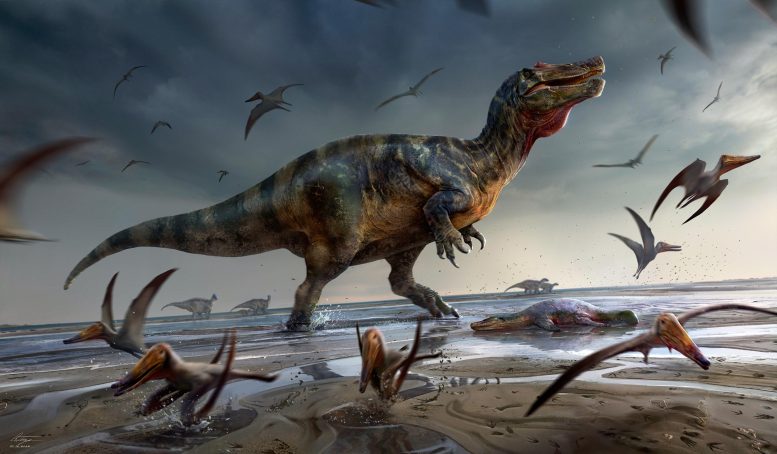
Artist illustration of a previously identified spinosaur on the Isle of Wight. Credit: Anthony Hutchings
University of Southampton paleontologists discovered evidence of diverse spinosaur species in southern England 100 million years ago, based on analysis of a 140 million year old dinosaur tooth. The tooth doesn’t match any known species, suggesting greater spinosaur diversity in the region during the Early Cretaceous period.
Paleontologists at the University of Southampton (UK) studying a British dinosaur tooth have concluded that several distinct groups of spinosaurs – dinosaurs with fearsome crocodile-like skulls – inhabited southern England over 100 million years ago.
The team, from the University’s EvoPalaeoLab, carried out a series of tests on the 140 million-year-old tooth, discovered in the early 20th century, in a thick, complicated rock structure named the Wealden Supergroup. The Wealden lies across south-eastern England and was formed around 140-125 million years ago.
The scientists conducted statistical analysis on the tooth, which is stored at the Hastings Museum and Art Gallery in East Sussex. They meticulously compared its characteristics with other species in the spinosaur ‘family’ of dinosaurs to which it belongs. Their findings, published in the journal PeerJ, confirm the tooth doesn’t match that of any identified spinosaur species.
Project supervisor, Dr. Neil Gostling explains: “While we can’t formally identify a new species from one tooth, we can say this spinosaur tooth doesn’t match any of the existing species we know about. Given how many individual teeth exist in collections, this could be just the tip of the iceberg and it’s quite possible that Britain may have once teemed with a diverse range of these semi-aquatic, fish-eating dinosaurs.”
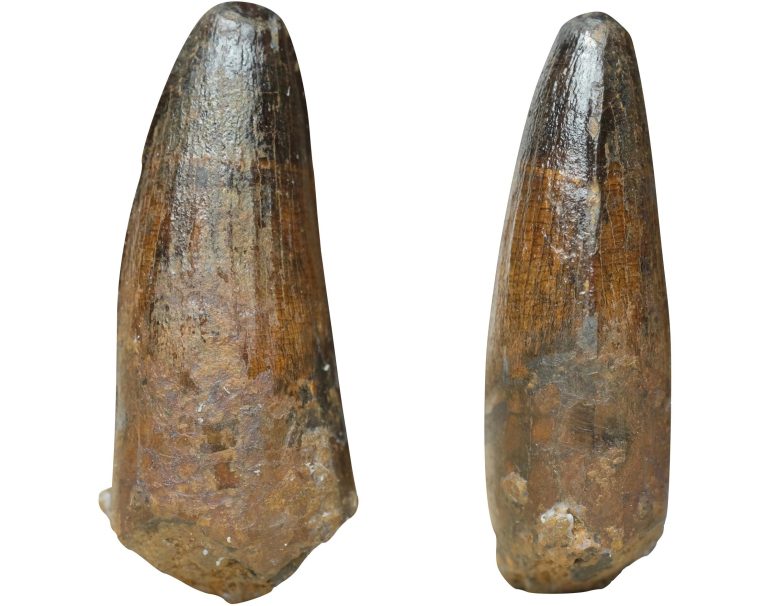
The spinosaur tooth from the Wealden in south east England seen from two different angles. Credit: Hastings Museum and Art Gallery
The Wealden is famous for its spinosaur fossils. Baryonyx – discovered in Surrey in 1983 – is one of the world’s most significant spinosaur specimens, since it was the first to reveal the true appearance of this crocodile-headed group. Less impressive spinosaur remains – isolated teeth – are common throughout the Wealden, and have often been identified as belonging to Baryonyx. However, some experts have long suspected that this is incorrect.
“We used a variety of techniques to identify this specimen, in order to test whether isolated spinosaur teeth could be referred to Baryonyx,” said lead author Chris Barker, whose PhD focuses on the spinosaurs of southern Britain. “The tooth did not group with Baryonyx in any of our data runs. It must belong to a different type of spinosaur.”
The results show that distinct and distantly related spinosaur types lived in the region during Early Cretaceous times. This backs up research by the EvoPalaeoLab team, who argued in previous studies that the spinosaurs of southern England are more diverse than previously thought.
In 2021, they named the ‘Hell Heron’ Ceratosuchops from the Isle of Wight, and in 2022 announced the discovery of what might be Europe’s largest ever land predator, a giant known only as the ‘White Rock’ spinosaur. These several spinosaurs did not all live at the same time, but inhabited the region over the course of more than 15 million years.
“Museums themselves are places to make exciting discoveries as our understanding of specimens changes from the time they were deposited,” said Dr. Neil Gostling. “What this work highlights is the importance of keeping collections alive, and developing our understanding of them. Curators are essential to help us navigate the cupboards and displays, helping us to unpick the often-incomplete records – either never fully recorded, or lost to time. The diversity of palaeoenvironments is not always hidden in rocks, it is often waiting in a museum, its importance waiting to be rediscovered!”
Co-author Darren Naish said “Dinosaur teeth preserve numerous anatomical details, and we can use various analytical techniques to see how similar, or different, they are to other teeth. Our new study shows that previously unrecognized spinosaur species exist in poorly known sections of the Wealden’s history, and we hope that better remains will be discovered that improves our knowledge. Here’s another reminder that even well-studied places like southern England have the potential to yield new dinosaur species.”
Reference: “Isolated tooth reveals hidden spinosaurid dinosaur diversity in the British Wealden Supergroup (Lower Cretaceous)” by Chris T. Barker, Darren Naish and Neil J. Gostling, 31 May 2023, PeerJ.
DOI: 10.7717/peerj.15453

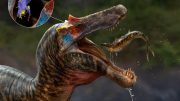

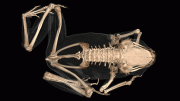
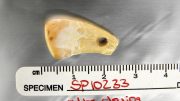
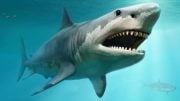
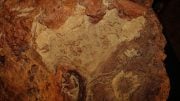
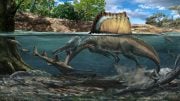
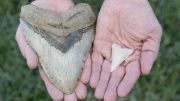
More akinetic allosaurus feature for dinosaur from anatomy kinesis of allosaurus skull link.supraoccipital fuse to parietal and laterosphenoid fuse to parietal .on dome pressure receptor fossil skin i did not know they can tell by the skin I thought only use big fenestra hole in the prootic to tell .on this link .the crocodile like sensory scales .cell.com. They say juravenator tail dome receptor tail skin has distinct circular nodes and distinct hinge like a gator skin like all tetanuran dinosaur skin
More news that spinosauridae is a mesoeucrocodylia I know I said enough . What are they hiding so call consevertive brain of spinosauridae irritator has high tech pseudorotunda like birds and gator for good hearing a warm blooded feature it reduce energy loss on sound use it has other use because it’s like mammal no reptile style thermoregulation it’s a busy animal like mammal how come journalism miss that any won believe I am only won know that probaly more than 10? Other dinosaur has it too europasaurus dysalotosaurus not found in tetanuran t.rex allosaurus clearly dinosaur are primitive the early dinosaur lack scapulocoracoid fusion what you can find in advance dinosaur the gator.the link for this.palaeo electronic .the osteology of irritator.origins of birds and crocodile researchgate.a new protosuchian crocodile upper Triassic . The other spinosauridae gator feature irritator has fuse pterygoid not found in sphenosuchus and protosuchus on the osteology irritator they said basisphenoid fuse to pterygoid a new element the parabasisphenoid bone the super pterygoid bone this bone is unpaired which mean the pterygoid are fuse they do not use that name fusion of basisphenoid to pterygoid two different bone only use for same bone at the side allso pterygoid basipterygoid laterosphenoid are fuse to make one bone the super pterygoid I did not know if it was fuse in dinosaur the pterygoid laterosphenoid but I know it was fuse in modern crocodilian the say it’s archosaur feature so it’s in all thecodont .in murusraptor link they say a paired of parietal bone two parietal bones this is example .the link a new megaraptoran dinosaur plos one .on saurornitholestes Wiley online library link .the cranial of new specimen . The quadrate foramen the bird size quadrate foramen for air sac for fake dinosaur dromaeosaur oviraptor the flightless bird .on murusraptor plos one link they say murusraptor quadrate foramen is same size like real dinosaur like t.rex but smaller than real bird dromaeosauridae .sphenosuchus and protosuchus they have a pseudorotunda
The link for sphenosuchus paired of pterygoid .palate evolution in early branching of crocodylomorphy.the protosuchian link .a new protosuchian Norian Argentina .the other spinosauridae advance feature they are hiding is turbinals or turbinates the mammal bird warm blooded feature .the 7 fenestra nasal of spinosaurus the link from academi edu enigmatic theropod spinosaurus. it is not for hearing as I thought .the ankylosaur dinosaur saichania allso has turbinate the link for that .saichania from the upper Cretaceous of Mongolia .there we’re challenger for gator turbinate claim they are small not complex as mammal and start at different place it’s clearly very simular to mammal turbinates cover in receptor cells 7 cavity very close to olfactory bulb but clearly gator is not a mammal so it’s different evolution origin .and there is another challenger show that bird turbinates have nothing to do with respiratory because some bird lack turbinates John Ruben find no turbinate in dinosaur he cliam is a dinosaur oviraptor so this bird oviraptor lack turbinates like some modern birds.turbinates have 3 function homeothermy water conservation smelling .aquatic mammal lose the smell but gain respiratory They can not open there mouth in water so lose the smell that is case for spinosaurus but not modern crocodilian in fact modern crocodilian is top in dinosaur for smelling but not as high like fossil early gator type land mesoeucrocodylia .yes there another challenger says they did use every mammal which is common in science then cliam it’s a fact .murine rodent olfactory higher than predator or predator who eat plant there respiratory is low the olfactory mean smelling so he is saying saichania report was wrong these australia murine rat has long thin snout like spinosaurus so cause respiratory turbinates to be reduce but the snout is long so olfactory is big what mammal and spinosaurus gator have in common they do not have air sac maybe that the anwser .Australia rat link scientific report.olfactory system of worm eating rodent.
Some bird the pterygoid is fuse diving bird they say fuse pterygoid is aquatic feature .spinosauride palatine probaly is fuse too some bird it is fuse likely this is neognathae modern bird feature in some ankylosaur the pterygoid is fuse . They are 3 groups in tetanuran tyrannosaur megalosauridae dubreuillosaurusidae they are going to call dubreuillosaurus dubreuillosaurusidae and megalosauridae can not be call dubreuillosaurusidae because it do not have a kink snout the link. A new megalosaurus dinosaur from late middle Jurassic . Dubreuillosaurus is very primitive the basisphenoid is not fuse to pterygoid parasphenoid the link .discovery of megalosaurus dinosaur from Normandy France. Spinosauridae is not primitive it has hook shape coracoid allso has quadrate foramen it is a tyrannosaur .quadrate foramen of tetanuran is not hollow only megaraptor carcharodontosaurus some compsognathus has pneumatic quadrate t.rex allso has it too these dinosaur are close to t.rex so they are 3 tyrannosaur .tyrannosaur allosaur spinosauridae .spinosaur is a kink snout tyrannosaur .allosaur arm are too advance .tyrannosaur feature is strong mesoeucrocodylia feature.pneumatic quadrate foramen is very rare in tetanuran .gator quadrate is heavily pneumatic because it’s greatest dinosaur ever.this famous flightless bird deinonychus the quadrate foramen is very big because they have air sac .
The pterygoid fuse turn into mammal sphenoid bone found in birds and gator .the fuse pterygoid data was hard to fine why is that. the easy won but no hype so it’s not modern science in modern science you need the hype for it to be true that what is preach .spinosauridae premaxilla is fuse like modern crocodilian and birds this feature is link to beaks of bird that why archaeopteryx does not have a beak allso in bird hip dinosaur some have beaks clearly gator and baryonyx does not have beaks it has other use .fuse premaxilla rare in thecodont because they have teeth and they do not have death roll system only thecodont with death roll system is gator baryonyx the spinosauridae allso maxilla are fuse allso fuse in protosuchus sphenosuchian but not that much and they are no link to premaxilla fuse part in baurusuchus mesoeucrocodylia they are no links too the fuse premaxilla maxilla contribute to occified secondary palate the occified secondary palate only found in turtle modern crocodilian mammal there are different secondary palate like t.rex expantion of premaxilla not at midline .in baurusuchus a land mesoeucrocodylia the premaxilla maxilla are fuse the suture line are not fuse premaxilla and maxilla.gobiosuchus they some premaxilla contribute to secondary palate it’s small in shartegosuchus fruitichampsa there is none at all not like gator or baryonyx .fruitichampsa gobiosuchus shartegosuchus are in the same group the palate change because they eat plants there are lot debate if these are mesoeucrocodylia in early branching of crocodylomorphy link some even claiming they are protosuchian but clearly they are mesoeucrocodylia there palate is full not open like protosuchian it’s full roof palate and choana very simular to modern forms shartegosuchus… not reptile like and a fuse frontals and pterygoid and destinctive cranioquadrate passage .gobiosuchus protosuchus palatines are not fuse it’s block by vomer pterygoid I think this is the feature of spinosauridae early gator type mesoeucrocodylia they lack fuse palatine in modern crocodilian it is fuse. When say eusuchian unique palate I know why now I thought it was because of fusion of braincase .palatine and pterygoid fusion so spinosauridae a early mesoeucrocodylia the palatine are not fuse all full palate are unique because they eat different food .premaxilla maxilla palatine fuse suture line contribute to secondary palate the line is fuse any way suture mean fuse so mesoeucrocodylia premaxilla maxilla must be fuse so no palatine fusion is needed.birds do not have palatine occified secondary palate because fuse palatine happen in later in evolution.now every won call gobiosuchian shartegosuchidae mesoeucrocodylia even wikipepeda .likely bird secondary palate have different evolution origin because only say turtle gator and mammal.I hype the premaxilla.spinosaurus was not aquatic claim yes it has fuse nasal very land feature and they have baryonyx line with a gator tail many land early gator type mesoeucrocodylia has gator tail .but baryonyx does not have eyed on top of there skull like spinosaurus and gator it’s not extreme like gator it’s early mesoeucrocodylia no evolutionist think baryonyx have same lifestyle like a gator because baryonyx is first mesoeucrocodylia and baryonyx teeth is not as straight like spinosaurus and gator.baryonyx and spinosaurus did not have the same lifestyle like the Nile crocodile or American gator close but not the same clearly spinosaurus is design to kill land animal better than modern form except one land dwarf caiman it allso has fuse nasal. baryonyx lack fuse nasal .American gator Nile crocodile allso hunt a lot on land but not enough to form a fuse nasal.academi edu link for palate .spinosaurus a crocodile mimic.some other link .gobiosuchus protosuchian from the late Cretaceous of Mongolia .gobiosuchus news it has big open hip socket like dinosaur only seen gharial type early gator type mesoeucrocodylia with that acetabulum it is circular like dinosaur and big I saw gator mugger crocodile acetabulum it’s very small but open perfortate
Fruitichampsa palatine meet midline so palatines is fuse like eusuchian mesoeucrocodylia .fruitichampsa gobiosuchus palate have fenestra not found in modern kind it reduce fusion and some of them have reptile type choana more advance animal today push back the choana .mammal modern crocodilian and birds.they say these plant eating mesoeucrocodylia are close to a eusuchian mesoeucrocodylia that eat plant I only thought only early land gator type mesoeucrocodylia eat plant these mesoeucrocodylia kill plant eating dinosaur with better technology. Gobiosuchus lack fourth trochanter that very strange for land crocodilian I thought all them were fully bipedal because they have better bipedal feature than modern form the same as dinosaur these feature are not found in modern form they say all them are notosuchidae .gobiosuchus nose is like spinosauridae American gator dwarf crocodile very primitive not like Nile crocodile and the caiman they have advance nose like mammal American gator is all bite force wider snout .I have seen spinosauridae type nose in thalattosuchian this animal probaly is a land mesoeucrocodylia it’s very rare thalattosuchian most are very aquatic gharial like with big supratemperal fenestra but in gator spinosauridae it’s reduce which is more evidence spinosauridae is more of land base the skull of spinosauridae is more like today dwarf caiman high and dome shape only different is spinosauridae snout is long longatrine like the false gharial and gharial there are no crocodilian like that today.allso American gator Nile crocodile skull is nothing like dwarf caiman they mite look simular but they complete different inside and outside they have different scientific name for the skull.spinosauridae and dwarf caiman have the same scientific name for the skull .American gator Nile crocodile have same scientific name for snout size .dwarf caiman spinosauridae skull is more like mammal .i here dwarf crocodile and dwarf caiman skull are very simular and simular lifestyle these are land crocodilian .I allso saw a notosuchidae with spinosauridae type nose these mesoeucrocodylia are close to spinosauridae that why .gharial allso lack fuse bone the frontal is not fuse to the nasal so could not crush metal like other crocodilian why would animal need such powerful bite most animal are not metal.spinosauridae frontal is fuse to nasal just like gator spinosauridae is design to kill t.rex the death roll is design to kill t.rex it’s great weapon today .so gharial is deevolution Which is very common in mesoeucrocodylia do not worry about gharial it has biggest palate in modern crocodilian so snout is big that enough back up I will never start a fight with won i know how dangerous they are.thalattosuchus lack many fuse future even protosuchus has more fusion or contact but it lack Eustachian tube fenestra this show thalattosuchian bone was fuse in the past that why only one name for mesoeucrocodylia I think won of names were mesosuchus i do not know other name .gobiosuchus allso lack a bone .modern crocodilian allso lack the same bone the prearticular .thalattosuchus has a prearticular bone and gobiosuchian lack supratemporal fenestra this seem like improvement from modern form improve bite force but what happen to the muscle it need to place some were is there any more room in the skull .? And if its a notosuchian there is no coronoid bone like birds there allso a muscle there?modern crocodilian has a coronoid bone like most dinosaur dromaeosaur bird lack coronoid bone even thou they have good specimen like microraptor they are more close to modern bird .archaeopteryx they found won probaly are small like the maniraptoran epipygoid that muscle can not attach too it that what herd about maniraptoran coronoid .allso coronoid bone allso found in the bird oviraptor .